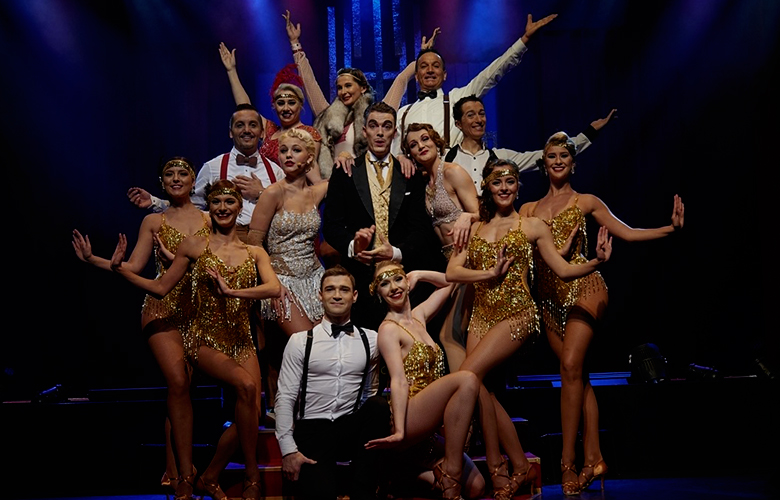
There is something both exciting and petrifying about a group of strangers coming together. Whether it’s that very first day of school, a new co-owners committee, or even jury duty, we are all predestined to experience such gatherings throughout our lives. However, for those who like to perform, first day’s introductions and making a good impression are parts of their routine.
How many will we be? Will this show feature as many men as women? How many people can speak my mother tongue? Who will be the cheerleader on those two-show days? What will be the dressing room’s average age? An endless list of questions that go through an artist’s mind when signing a contract. If a quick look at that first group email followed by some Google and social media research can provide answers to many, the answer to what might be the ultimate question has yet to be found:
If it ain’t the very nature of a show, a pre-established “hierarchy” can already set the tone. Ask some “circus veterans” and they’ll tell you that first days are all about observing to determine who can be trusted, who prefers listening over talking, and who’s the quickest there with a helping hand. Then, and only then, will they decide who to open up to. Dancers have said that a tight “Corps” that really puts the piece before their egos or a dance captain gifted with communication skills might be “it.” Some performers argue that Holiday Show casts are the best and easiest groups to be around if only because of the festive time in which such productions are taking place.
It should come as no surprise that cast members not only rapidly get to know each other but often end up knowing their colleagues better than their families, given the wide range of emotions that one both experiences and displays in a piece, a song, or a duet.
They see each other overwhelmed with joy after a show-stopping ovation, at their most tired, head over heels in love, sick to the point of puking between cues, upset that their voice cracked while reaching that final note, or grieving the loss of a friend overseas. These are the people with whom every day, every show, and every emotion are shared… for better and for worse! No wonder that casts can often feel like marriages! It ain’t a case of “’til death part us” but of “’til tickets sales drop” or “’til this contract’s final performance.”
If newspapers and blogs are endlessly trying to find answers to what makes a happy marriage, what about those polygamists’ unions spread between stage right and stage left?
You are German, British, Russian, Argentinean, Italian, and Ukrainian. You congregated in Stuttgart in November of 2019 to bring a new show to life. By combining circus skills, dance steps, comedy, poetry, vibrant vocals, and moving melodies, every single one of you shone during rehearsal weeks, proving that you definitely had a place in “1925” at the Friedrichsbau Varieré.
Some had a bigger smile on their faces, a few could have used more sleeping hours during this creation process, but everyone was present when they had to be and there never was any need to run after or call anyone. I’ve seen you with a captivated look on your face as one of us rose into the air, while this one was asking how to properly do and sell that dance step. You’ve all shown interest, not to the show alone, not only to the scenes you were planned to be a part of, but to what others were up to while you were meant to be standing in the wings or killing time in the dressing room.
That might be the first of many secrets to a happy cast. If wanting to stay connected to those we love is a natural and understandable need that one should not get judged for, choosing to remain where you no longer are over the place and people who could really use your energy and presence is likely to make one miss out on opportunities for artistic growth, new friendships, and fun, unplanned cues that will make this run far more enjoyable. Even if phones did find their way between two of us from time to time, no text turned out to be more important than assisting our MC getting in his straight jacket and no social media stopped you from helping out with that stack of chairs that had to be carried on and off stage. All of which while exchanging bits and pieces of personal and artistic paths. Something that none of us seems to have grown bored of to this day, with the occasional dirty joke and somewhat embarrassing anecdote thrown into the mix.
When asked about this show’s general atmosphere, I found myself repeating that this had to be the most drama-free environment I’ve got to perform in. No drama, no diva, no ego. From the show’s director who always stopped to listen to artists’ suggestions and made it clear that the cast would give life to this production each night, not him. “Me me me” is a song that I’ve never heard hummed on or off stage since I got here. instead of seeing you punching into the walls when you dropped a prop or hearing you shouting at the sound technician when the mic didn’t go on, I’ve seen and heard you laugh, just like the time that costume got unhooked at the wrong time. By looking for ways to cheer up when the audience felt quiet, either by bursting into a rap in the wings, having a dance jam by the costume rack, or explaining how you just ridiculously got lost in the middle of a scene but still made it work, each of you has chosen “LOL” over “OMG.”
“A hint of spontaneity is precisely what you need” and if Mary Poppins says so in “Supercalifragilisticexpialidocious” it has to be true! Even if the show is set and the choreography could not be more clear, there are still loads of moments where one can give a fresh spin to that good old routine. By letting a sudden creative impulse or today’s cast mate’s mood take over a scene, one can connect in new ways with those who have been sharing the same space, sound, and light for a week, a month, or a year. That new twist and turn variation you threw in there while laughing and looking at me, the time you decided to go off-script with that bit in the audience, that rhyme that made me explode in laughter in your monologue or when you came to me at intermission to suggest a place swap in an upcoming scene. All those little things that do not affect a show’s quality can and will keep an ensemble on their toes (even if not on point shoes), will help see the show as fresh and fun, and even allow you to see people you thought you knew in a different light.
Things can, of course, get rough when joining a cast that has already been working together for a long stretch of time, a group where you’re the only one that does not speak the common language or an ensemble where everyone was born in the same decade and came with the same reference. Everyone… But you! As pointed out before, there are still no official answers to the good cast’s mystery and there are no such things as perfect casts and perfect shows. However, by being present, showing interest, laughing instead of crying, and surprising me with your spontaneity, Amelia, Andrey, Anna, Billie, David, Hayley, Irina, Katie, Merlin, Rebecca, Tatiana, Ulrike, and Victor have shown me that, if the perfect cast does not exist, 1925’s is a pretty good one!
p.s. The good cast’s recipe’s final ingredient: a crew that follows the same rules, as no show, no cast is complete without them!
“I Love Piano”: An Artist’s Passion Lived Offstage
A View From the Back: The Corps, Chorus and House Troupe Perspective


Impassioned by performing arts, Martin Frenette started intensive dance training at a very young age before trading pliés and barres for ropes and somersaults at Montreal's National Circus School. He has spent a decade in Europe, performing in various productions. Circus Monti, Chamäleon Theater, Wintergarten Varieté, Cirque Bouffon, GOP Show Concepts, and the Friedrichsbau Varieté have allowed him to grow artistically and humanly. Martin has also invested time working as an artistic consultant, director, and choreographer for both circus and dance projects. He enjoys splitting his time between Europe, Canada, and the US, working on stage and creating for others. Writing has always been a big passion of his and he's thrilled to share his views on shows, the stage, and what's going on behind the scenes with other performing arts enthusiasts!
Read Full Profile© 2021 TheatreArtLife. All rights reserved.

Thank you so much for reading, but you have now reached your free article limit for this month.
Our contributors are currently writing more articles for you to enjoy.
To keep reading, all you have to do is become a subscriber and then you can read unlimited articles anytime.
Your investment will help us continue to ignite connections across the globe in live entertainment and build this community for industry professionals.